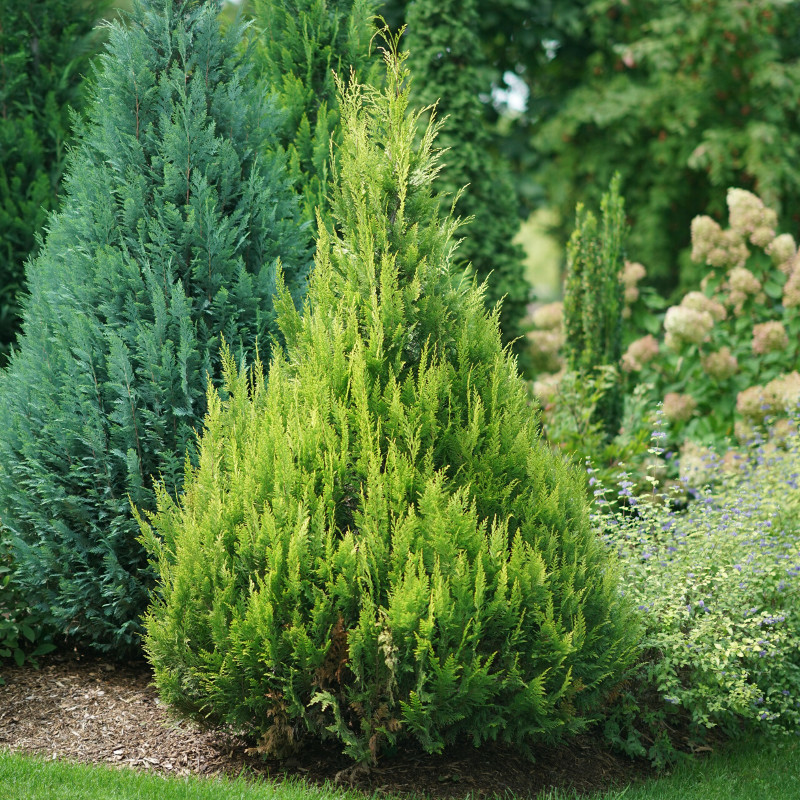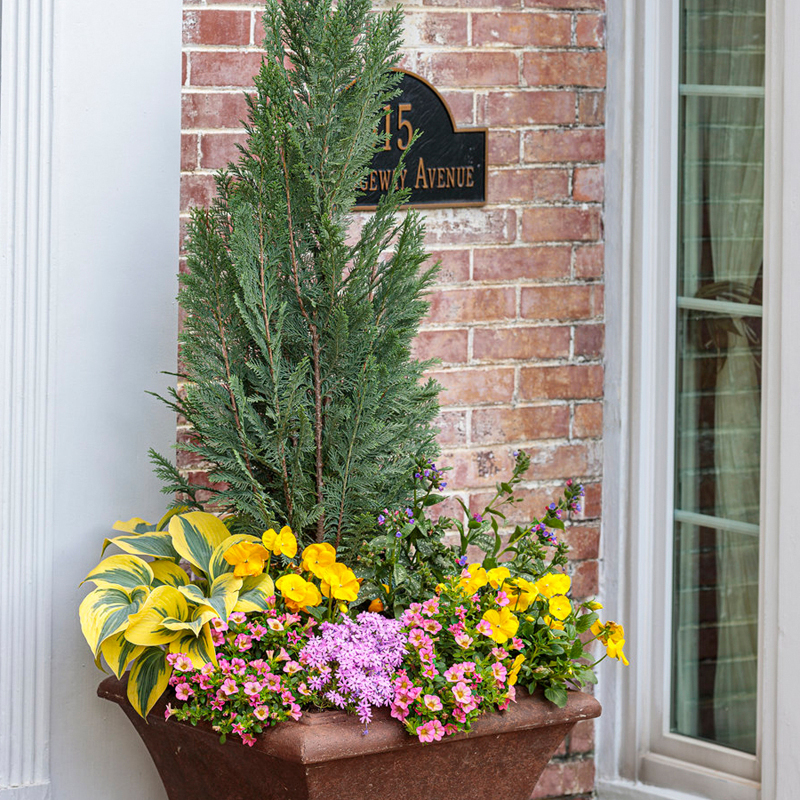Chamaecyparis is a genus of evergreen conifers native to Japan and Taiwan and the Eastern and Western edges of the United States. The name translates in Greek to “ground cypress". Of the six existing species, four (C. thyoides, C. obtuse, C. pisifera, and C. lawsoniana) are highly valued ornamental plants. They are among the tallest and the longest-lived trees on the planet. One C. lawsoniana was measured at 1755 years old in 1965.
Hundreds of false cypress cultivars are available in nearly every shape and color, from under a foot high to 230 feet fall. They are indispensable for adding colorful interest year-round, but especially in the winter landscape. The highly scented wood is prized in Japan for use in building temples. Hardiness is typically from USDA zones 4-8, depending on the variety.

Planting False Cypress
False cypress will grow best in full sun and in moist yet well-drained soil with a pH of 6-7. Dig a space as deep as the root ball and twice as wide, allowing enough space from neighboring plants and structures for the plant to reach its mature width. Create a hollow or moat around the dripline of the plant to retain water in the first few seasons. An organic mulch will help retain water.
Watering False Cypress
Best growth and flowering results from even watering. Once the roots are established, after the first two growing seasons, some drought and heat can be tolerated. At planting, it is helpful to add a layer of mulch to slow evaporation.
Water false cypress deeply once or twice per week during those first years. During heat spells, water more. Containers will need watering more often, perhaps daily in very hot or dry weather.
Fertilizing False Cypress
False Cypress benefits from a slow-release fertilizer in early spring. Look for a product formulated for woody plants rather than annuals. Add a side dressing of compost in fall to improve soil structure.
Pruning False Cypress
If you would like to use the false cypress in a hedge, start pruning when young. Avoid cutting into old wood as Chamaecyparis will not regenerate new growth from these cuts. Remove diseased or broken branches in midwinter to maintain the shrub's health. For hedges, cut back twice annually in early fall and late winter before new growth begins.

Caring For False Cypress in Pots
Dwarf cultivars are best for containers. Select an appropriate-sized pot with drainage and fill it with high-quality potting soil. Fertilize lightly with slow-release fertilizer made for woody plants. Keep the soil evenly moist through the summer. Consider mulching with a light layer of shredded leaves or bark, especially before winter. If a freeze is expected, give the plant a long drink to hydrate and protect the roots. Top-dress with compost or manure in the fall.

Winter Care for False Cypress
Amend soil with compost and organic matter as needed in fall. If your area is subject to strong freezes, add a winter mulch to keep the roots moist. Water deeply before strong freezes, especially in containers. In mid- to late-winter, check for any dead or diseased branches and remove, without cutting into “old wood”.
Common False Cypress Care Questions
What Is The False Cypress Growth Rate?
Typically, false cypress varieties are a bit slow growing, gaining only between 6 and 8 inches, annually.
Is False Cypress Perennial Or Annual?
False cypress is evergreen bushes that provide visual interest all year around.
Does False Cypress Need Full Sun?
False cypress prefers fun sun conditions, but they are able to tolerate a little bit of shade.
False Cypress Leaves Turning Brown?
The most common cause of false cypress turning brown is lack of moisture, but can also be caused by over-watering.
Have a question about False Cypress? Fill out the form below and we will try and get back to your question as soon as possible. We may even feature your question on this article to help other gardeners!
 |
Author Erica Browne Grivas - Published 06-17-2021 |
